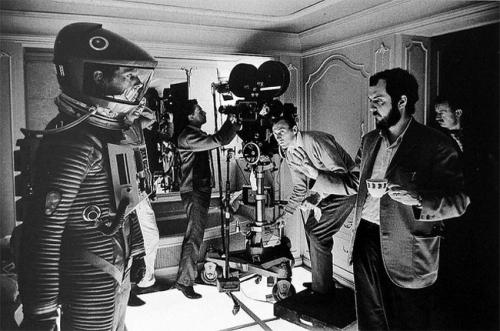Topic: HOLLYWALD - on June 21, 2012 at 8:42:00 AM CEST
Shooting 2001

... Link (0 comments) ... Comment
Topic: NASA - on June 21, 2012 at 8:24:00 AM CEST
ISS Star Trails
Expedition 31 Flight Engineer Don Pettit relayed some information about photographic techniques used to achieve the images: “My star trail images are made by taking a time exposure of about 10 to 15 minutes. However, with modern digital cameras, 30 seconds is about the longest exposure possible, due to electronic detector noise effectively snowing out the image. To achieve the longer exposures I do what many amateur astronomers do. I take multiple 30-second exposures, then ‘stack’ them using imaging software, thus producing the longer exposure

... Link (0 comments) ... Comment
Topic: DRUGS - on June 21, 2012 at 8:23:00 AM CEST
US Navy finds 19,000 pounds of marijuana floating off California
An aircraft carrier group recovered an estimated 19,000 pounds of marijuana that had been dumped into the Pacific Ocean over the weekend by three boats off the California coast, the Navy said Tuesday.
Nobody was apprehended and the three boats sped off after dropping their load, said Lt. Aaron Kakiel, spokesman with Naval Air Forces Pacific.
Crews from the aircraft carrier Nimitz, guided-missile cruiser Princeton, Helicopter Sea Combat Squadron 6, Helicopter Maritime Squadron 75 and the Mexican Navy picked up 186 bales of marijuana that apparently was en route to the United States.
... Link (0 comments) ... Comment
Topic: PHOTO - on June 21, 2012 at 8:22:00 AM CEST
Gigapixel Camera Catches the Small Details
David Brady, an engineer at Duke University in Durham, North Carolina, and his colleagues are developing the AWARE-2 camera with funding from the United States Defence Advanced Research Projects Agency (abstract). The camera's earliest use will probably be in automated military surveillance systems, but its creators hope eventually to make the technology available to researchers, media companies and consumers. ... AWARE-2 sidesteps the size issue by using 98 microcameras, each with a 14-megapixel sensor, grouped around a shared spherical lens. Together, they take in a field of view 120 degrees wide and 50 degrees tall. With all the packaging, data-processing electronics and cooling systems, the entire camera is about 0.75 by 0.75 by 0.5 metres in volume. The current version of the camera can take images of about one gigapixel; by adding more microcameras, the researchers expect eventually to reach about 50 gigapixels. Each microcamera runs autofocus and exposure algorithms independently, so that every part of the image — near or far, bright or dark — is visible in the final result. Image processing is used to stitch together the 98 sub-images into a single large one at the rate of three frames per minute
... Link (0 comments) ... Comment
Topic: COMPUTER - on June 21, 2012 at 8:20:00 AM CEST
Centenary of the birth of WWII code breaker Alan Turing
This week sees the 100th anniversary of the birth of Alan Turing, a man regarded as one of the most influential mathematicians of the 20th Century.
He is best known for his work cracking the Germans' secret codes during the Second World War.
He is also regarded as one of the pioneers of computer technology.
An exhibition devoted to his life and achievements opens at the Science Museum in London on 21 June.
... Link (0 comments) ... Comment
Topic: WEB - on June 21, 2012 at 8:18:00 AM CEST
Nigerian scams are hyper-efficient idiot finders
The bigger the lie, the bigger the pile of cash scammers scoop, says MSFT boffin
A Microsoft researcher, Cormac Herley, has penned a paper titled “Why do Nigerian Scammers Say They are from Nigeria?” (PDF), and concludes the whoppers the scam includes are actually a very efficient way of finding likely targets.
... Link (0 comments) ... Comment










